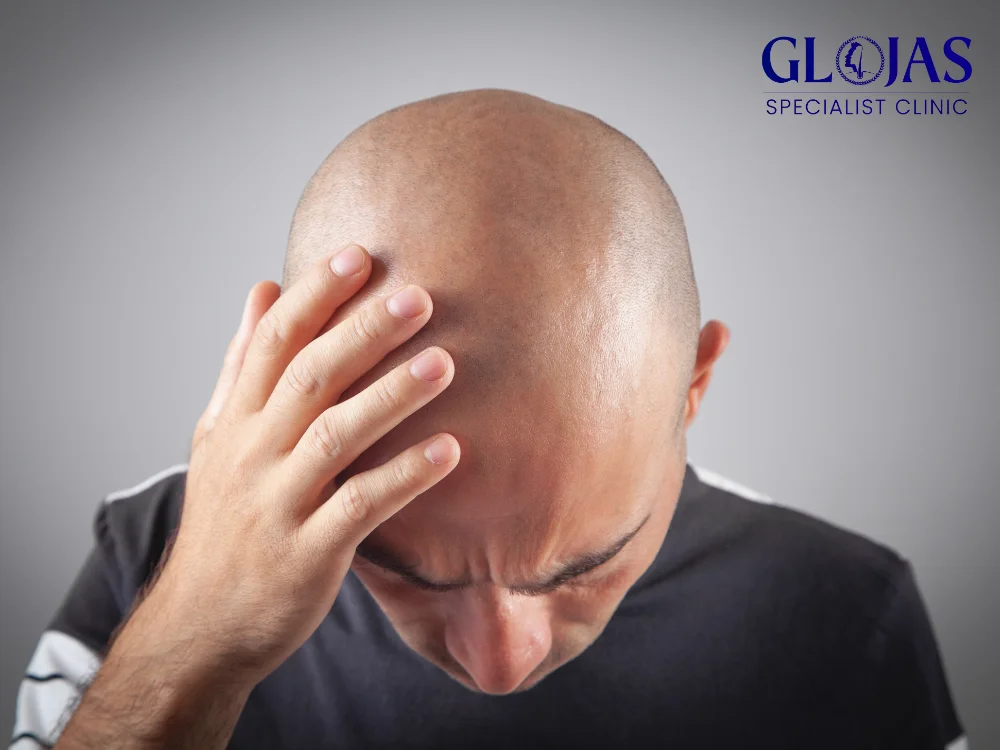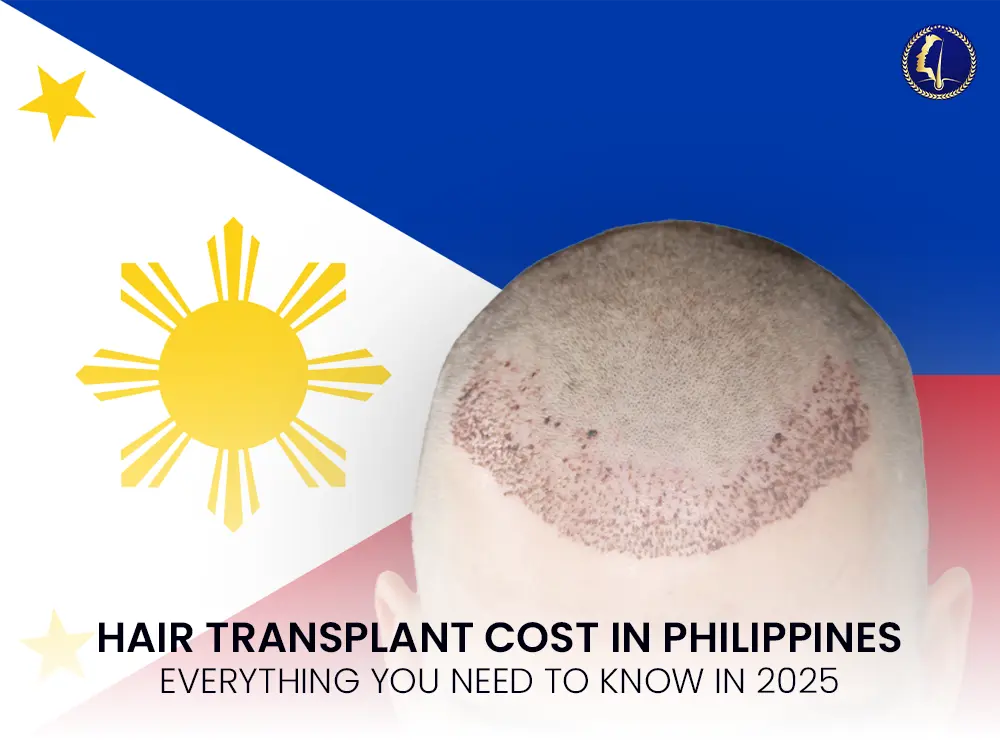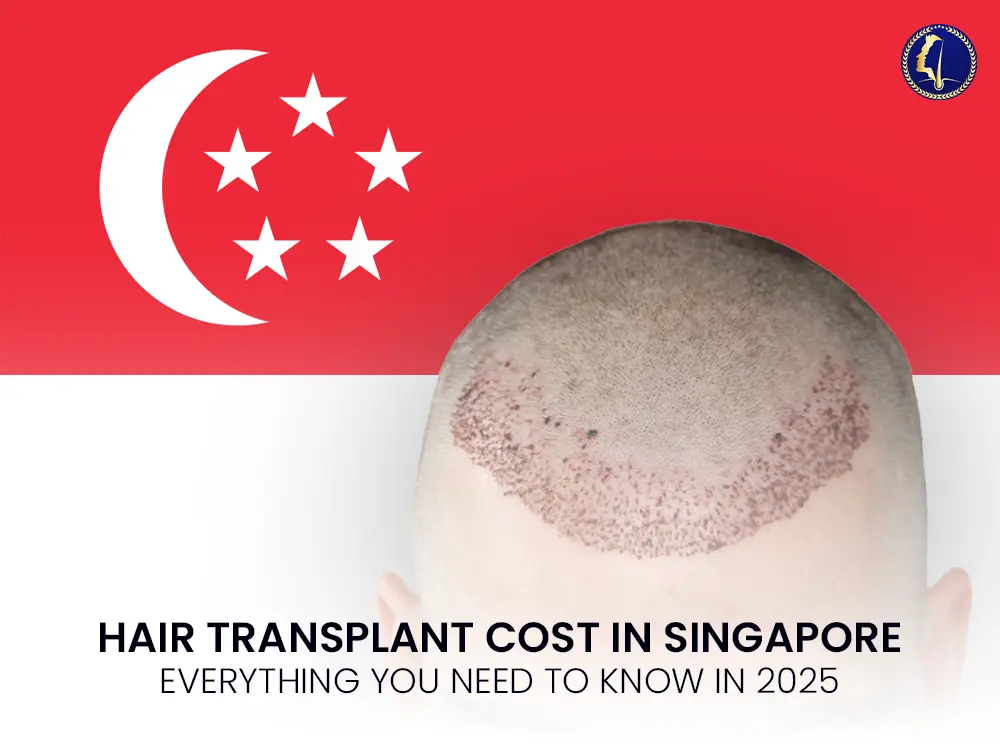Ultimate Guide to Effective Balding Treatment: 7 Proven Methods to Restore Your Hair

Hair loss, especially balding, can be distressing and can affect one’s self-esteem. Fortunately, advancements in medicine and technology have led to the development of several balding treatments that can slow down or reverse hair loss. Whether you’re dealing with a receding hairline or thinning hair, there are proven methods that offer real solutions. In this article, we’ll explore some of the most effective balding treatment options and how they can help you regain your confidence and appearance. Understanding Balding: Causes and Early Signs Before diving into balding treatments, it’s essential to understand what causes hair loss. Balding, medically known as androgenetic alopecia, is the most common type of hair loss in men and women. It’s often genetic, with hair thinning beginning around the temples and crown. Some key causes of balding include: Genetic factors: A family history of hair loss increases your chances of balding. Hormonal changes: Hormonal imbalances, especially an excess of dihydrotestosterone (DHT), can shrink hair follicles. Aging: As we age, hair growth naturally slows down, leading to thinning. Nutritional deficiencies: Lack of certain vitamins and minerals can weaken hair. Stress: Chronic stress can lead to temporary or permanent hair loss. Recognizing the early signs of balding is crucial for prompt treatment. These signs include a receding hairline, thinning hair on the crown, and excessive hair shedding. Top 7 Effective Balding Treatments When it comes to balding treatment, no one solution fits all. However, these seven methods are widely recognized as effective approaches for slowing down or reversing hair loss. 1. Minoxidil (Rogaine) Minoxidil is a topical medication that has been FDA-approved for treating hair loss. It works by increasing blood flow to hair follicles, promoting hair regrowth. Available in liquid or foam form, it’s typically applied twice a day. Advantages: Easy to use at home. Results visible within 4–6 months. Disadvantages: Continuous use is required to maintain results. May cause scalp irritation in some users. 2. Finasteride (Propecia) Finasteride is an oral medication that helps reduce the levels of DHT, a hormone responsible for shrinking hair follicles. By lowering DHT levels, finasteride slows hair loss and can even promote hair regrowth. Advantages: Particularly effective in treating male pattern baldness. Can significantly reduce hair thinning. Disadvantages: Not suitable for women. Possible side effects, including decreased libido. 3. Hair Transplant Surgery For those seeking a permanent balding treatment, hair transplant surgery is an excellent option. This procedure involves transplanting hair follicles from one area of the scalp (usually the back) to the balding areas. Types of Hair Transplants: FUT (Follicular Unit Transplantation): A strip of skin with hair is removed and divided into grafts. FUE (Follicular Unit Extraction): Individual hair follicles are extracted and transplanted. Advantages: Permanent solution with natural-looking results. High success rate for both men and women. Disadvantages: Expensive. Requires downtime for recovery. 4. Platelet-Rich Plasma (PRP) Therapy PRP therapy is a cutting-edge treatment that involves injecting platelet-rich plasma from your own blood into the scalp. This plasma contains growth factors that stimulate hair follicles, encouraging regrowth. Advantages: Minimally invasive. Uses the body’s own healing processes. Disadvantages: Multiple sessions are required. Not always effective for severe hair loss. 5. Low-Level Laser Therapy (LLLT) LLLT uses red light wavelengths to stimulate hair follicles, promoting hair regrowth and slowing down hair loss. This therapy can be done at home with a laser comb or helmet or in a clinic setting. Advantages: Safe and painless. Suitable for both men and women. Disadvantages: Results take several months. Requires continuous use to maintain hair growth. 6. Nutritional Supplements Hair growth can be significantly influenced by your diet. Supplements like biotin, vitamin D, iron, and zinc are essential for maintaining healthy hair. These vitamins and minerals help strengthen hair, prevent breakage, and promote regrowth. Advantages: Easy and affordable addition to your routine. Improves overall health in addition to hair growth. Disadvantages: Results may take longer to appear. Only effective for hair loss caused by nutritional deficiencies. 7. Scalp Micropigmentation If you’re looking for a non-invasive balding treatment that offers immediate results, scalp micropigmentation (SMP) might be ideal. This cosmetic tattooing procedure involves applying small dots of pigment to the scalp, mimicking the appearance of a shaved head or fuller hair. Advantages: Quick procedure with immediate results. No downtime or recovery required. Disadvantages: Requires regular touch-ups. Not a hair restoration solution but a cosmetic enhancement. Lifestyle Changes That Can Help with Hair Loss In addition to medical and cosmetic balding treatments, simple lifestyle changes can significantly slow down hair loss and improve hair health: Stress management: Practice relaxation techniques such as yoga, meditation, or deep breathing to lower stress levels. Balanced diet: Eat a diet rich in vitamins, minerals, and antioxidants to nourish hair follicles. Proper hair care: Avoid excessive styling, heat, and chemical treatments that can damage hair. How to Choose the Best Balding Treatment for You Selecting the right balding treatment depends on various factors, including the severity of your hair loss, your budget, and your overall health. Here’s how to make an informed decision: Consult a dermatologist or hair specialist: A professional can assess your hair loss and recommend the best treatment options based on your condition. Consider the pros and cons: Weigh the advantages and disadvantages of each treatment to find the one that aligns with your preferences. Be patient: Many balding treatments take several months to show visible results, so consistency and patience are key. Frequently Asked Questions (FAQs) 1. Is balding treatment permanent? Some balding treatments, like hair transplants, offer permanent results. However, medications like Minoxidil and Finasteride require continuous use to maintain hair regrowth. 2. Can balding be reversed? While certain treatments can slow or even reverse early-stage balding, it is often challenging to fully reverse advanced hair loss without surgical intervention. 3. How long does it take to see results from balding treatments? Results can vary based on the treatment. For example, Minoxidil may show results within 4–6 months, while hair transplants offer immediate visual improvement with full
How Much Does a Hair Transplant Cost in the Philippines? (2025)

Hair Transplant Cost In Philippines Hair transplant procedures have gained popularity in the Philippines as an effective solution for hair loss. Understanding the hair transplant Philippines is essential for individuals considering this procedure. The cost can vary based on several factors, including the type of procedure, the number of grafts needed, and the clinic’s reputation. In this guide, we’ll explore the different types of hair transplants available, their costs, and factors that influence pricing. How Much Does a Hair Transplant Cost in the Philippines? The hair transplant cost in the Philippines typically ranges from PHP 80,000 to PHP 250,000, depending on the type of transplant and the extent of hair loss. The cost per graft usually ranges between PHP 25 to PHP 80, making the overall price highly dependent on the number of grafts required. Factors Affecting Hair Transplant Cost in the Philippines 1. Type of Hair Transplant Procedure There are three main types of hair transplant procedures available: Follicular Unit Extraction (FUE) – The most popular method, with costs ranging from PHP 100,000 to PHP 250,000. Follicular Unit Transplantation (FUT) – A more traditional approach, costing between PHP 80,000 to PHP 200,000. Direct Hair Implantation (DHI) – A more advanced technique, often priced higher at PHP 120,000 to PHP 300,000. 2. Number of Grafts Needed The total cost of a hair transplant in the Philippines depends largely on the number of grafts required. For instance: 1,000 grafts: PHP 80,000 – PHP 120,000 2,000 grafts: PHP 150,000 – PHP 200,000 3,000+ grafts: PHP 200,000 – PHP 300,000 3. Clinic Reputation and Location Renowned clinics with experienced surgeons often charge higher fees due to their expertise and success rates. Clinics in major cities like Manila, Cebu, and Davao tend to have higher prices than those in smaller towns. 4. Surgeon’s Experience A highly experienced and certified hair transplant surgeon will typically charge more. However, choosing a skilled specialist increases the chances of successful and natural-looking results. 5. Additional Treatments Some clinics offer platelet-rich plasma (PRP) therapy or low-level laser therapy (LLLT) to enhance hair growth post-transplant. These treatments can add PHP 10,000 – PHP 30,000 to the total cost. Is a Hair Transplant in the Philippines Worth the Cost? Compared to countries like the US or Singapore, the hair transplant cost in the Philippines is significantly lower, making it an attractive option for medical tourists. Filipino clinics use advanced technology, ensuring quality results at a fraction of the international price. FAQs About Hair Transplant Cost in the Philippines 1. What is the cheapest hair transplant procedure in the Philippines? FUT is typically the most affordable option, costing between PHP 80,000 to PHP 200,000. 2. Does insurance cover hair transplant costs? Most insurance policies do not cover hair transplant costs in the Philippines, as it is considered a cosmetic procedure. 3. How long does it take to see hair growth after a transplant? New hair growth begins within 3-6 months, with full results visible in 12-18 months. 4. Are there financing options available for hair transplants in the Philippines? Many clinics offer installment plans to help manage the hair transplant cost. 5. What is the success rate of hair transplants in the Philippines? With experienced surgeons, the success rate is 90-95%, provided proper post-surgical care is followed. Conclusion The hair transplant cost in the Philippines varies based on several factors, including the type of procedure, clinic reputation, and number of grafts required. With competitive pricing and high-quality services, the Philippines is a viable destination for individuals seeking affordable and effective hair restoration solutions. The hair transplant cost in the Philippines varies depending on several factors, including the type of procedure, the clinic’s location, and the number of grafts required. Many individuals seek affordable hair transplant cost options in the Philippines due to its competitive pricing compared to other countries. The hair transplant cost can range from PHP 80,000 to PHP 250,000, making it a cost-effective solution for those experiencing hair loss. Understanding the hair transplant cost in the Philippines is essential for making an informed decision, as different clinics offer various packages that impact the overall hair transplant cost. By researching clinics and comparing the hair transplant cost in the Philippines, individuals can find the best procedure to suit their budget and needs.
Hair Transplant Cost Singapore: Price Breakdown & Hair Graft Calculator

Hair transplant Singapore is becoming a popular, effective solution for men and women struggling with hair loss. But one of the most common questions is: How much does a hair transplant cost in Singapore?This comprehensive guide will cover the typical FUE and FUT hair transplant prices, factors that influence the total cost, and how to get the best value for your investment in hair restoration. FUE vs FUT: Hair Transplant Cost Based On Techniques & Price Comparison FUE (Follicular Unit Extraction) and FUT (Follicular Unit Transplantation) are the two main methods used in Singapore clinics: FUE Hair Transplant:The most popular method. Individual hair follicles are extracted and implanted one by one. FUE offers minimal scarring, a quicker recovery, and the most natural-looking results.Typical Cost: SGD 5,000 – SGD 20,000 (depending on number of grafts). FUT Hair Transplant:A strip of scalp is removed from the donor area, then separated into grafts. FUT may be more affordable but can leave a linear scar.Typical Cost: SGD 4,000 – SGD 14,000. Key takeaway:FUE is more advanced and minimally invasive, but usually costs more than FUT. What Factors Affect Hair Transplant Cost in Singapore? The cost of a hair transplant can vary widely. The most important factors include: Number of Grafts Needed:More extensive hair loss = more grafts = higher price. Surgeon’s Experience & Clinic Reputation:MOH-certified, highly experienced surgeons often charge more, but deliver safer and better results. Technique Used:FUE and new methods like SMART™ FUE cost more due to advanced technology. Clinic Facilities & Location:Premium clinics in central Singapore may charge higher fees. Additional Services:Pre-op assessments, post-op care, PRP, and medications may be included or billed separately. Hair Graft Calculator: Estimate Your Total Hair Transplant Cost Instantly Wondering what your exact hair transplant cost in Singapore might be?Use our Hair Graft Calculator to get a personalised estimate based on your level of hair loss and desired density.Typical pricing: 500 grafts: SGD 4,500–6,000 1,000 grafts: SGD 7,000–10,000 2,000 grafts: SGD 12,000–16,000 Note: Actual prices may vary. Book a free consultation for a precise quote. What’s Included in Hair Transplant Packages? A reputable Singapore hair transplant clinic will provide transparent pricing. Always check if your quote includes: Surgeon’s fees Facility & equipment fees Pre-op assessment Post-op care & follow-up Medications (antibiotics, pain relief) PRP or growth factor treatment (if included) Are There Hidden Costs or Additional Fees? Beware of clinics advertising prices “per graft” without a full breakdown. Ask for: Any additional consultation or follow-up fees Medication or post-care charges Taxes (GST) or surcharges GLOJAS Hair Clinic is committed to transparent, all-inclusive pricing for hair transplant in Singapore. Insurance & Financing: Does Insurance Cover Hair Transplant? In Singapore, hair transplant is generally considered a cosmetic, elective procedure and is NOT covered by standard insurance.Some clinics may offer in-house financing or instalment plans—ask during your consultation. How to Get the Best Value for Hair Transplant in Singapore Choose a MOH-certified clinic with experienced surgeons Read patient reviews and check before/after photos Request a clear, written quote with no hidden costs Don’t decide on price alone: The cheapest clinic may not deliver safe or natural-looking results FAQs About Hair Transplant Cost in Singapore How much does a hair transplant cost in Singapore?Most procedures range from SGD 4,500 to SGD 16,000, depending on grafts, technique, and surgeon. Why is FUE more expensive than FUT?FUE is less invasive, leaves no linear scar, and requires advanced skill and equipment. Are there ways to save on hair transplant in Singapore?Some clinics offer packages for multiple sessions or promotional discounts—ask during your consultation. Is the price per graft or per session?Both pricing models exist. Always confirm which is used and what’s included. Does GLOJAS offer financing for hair transplant?Flexible payment plans are available—contact us to learn more. Conclusion: Your First Step to Hair Restoration in Singapore A hair transplant is a long-term investment in your confidence and appearance. The cost depends on many factors, but with a reputable, MOH-certified clinic, you’ll enjoy natural, lasting results and peace of mind. Ready to take the first step? Book a free consultation today to receive your personalised quote and treatment plan for hair transplant in Singapore.